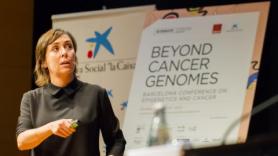4. From sequencing the whole genome to the importance of the “epigenome”
According to Carlos López Otín, professor at the University of Oviedo and one of the heads of the International Cancer Genome Consortium in Spain, “The possibility of sequencing whole genomes has allowed us to go from hypothesis-based studies to agnostic approaches." His team, which is sequencing the genome of chronic lymphoid leukemia, has made huge steps forward in recent years. They began analyzing the full DNA of 4 patients in 2011 and just four years later, they were able to do so with up to 150 (checking part of their results in nearly 500 more).
Their results have helped identify up to 60 new mutations involved in the development of leukemia, with a curious characteristic: many of them are found in regions outside of the genes, in the supposedly regulatory areas of the "dark DNA". And some of these discoveries are already being used as the basis for experimental treatments. This is why it is so important, says Otín, to sequence full genomes and not just the regions where genes are located.
Not just that. In the transcendental fight against resistance to treatment –"the never-ending story of anti-tumor drugs," says Otín– information on the genome can also be very useful. Cancer's ability to evolve and adapt to therapies could sometimes be predicted from its initial characteristics. "This is another possible use for the cancer sequencing projects: anticipating resistances and mechanisms."
But how can we select and prioritize when it is so complex? Otín calls for three key criteria: the recurrence of a mutation, how new it is and, surprisingly, "intuition".



